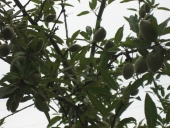
 5
5




I wrestled with reality for 36 years, and I'm happy to say I finally won out over it.
 5
5




Invasive plants are Earth's way of insisting we notice her medicines. Stephen Herrod Buhner
Everyone learns what works by learning what doesn't work. Stephen Herrod Buhner
 8
8




Lori Ziemba wrote:Hi all,
Can someone explain to me the whole concept of a food forest and how it works? I just don't get it. I understand about fruit and nuts and berries. But aside from those, you really can't find a lot of food for humans in a temperate forest. The things we eat need sun. Even most animals need "edge" to survive.
How in the world can you grow most of your food in a forest? I watch videos, and I see people planting vegetable between tiny little fruit trees, and calling it a food forest. But when those trees grow, they'll be too much shade to grow most vegetables.
Is this whole thing an overrated idea that just doesn't work in the real world, or am I missing something? Anyone out there actually have a food forest that produces most of their food?
A build too cool to miss:Mike's GreenhouseA great example:Joseph's Garden
All the soil info you'll ever need:
Redhawk's excellent soil-building series





 6
6




Apartment-dwelling hopeful future permie
 4
4




I wrestled with reality for 36 years, and I'm happy to say I finally won out over it.
 6
6




 7
7




Weeds are just plants with enough surplus will to live to withstand normal levels of gardening!--Alexandra Petri
 7
7




So the seven layers of a food forest are (as I'm sure y'all know):
Overstory
Understory
Shrub layer
Herbaceous layer
Root layer
Ground cover layer
Vine layer
Invasive plants are Earth's way of insisting we notice her medicines. Stephen Herrod Buhner
Everyone learns what works by learning what doesn't work. Stephen Herrod Buhner
 6
6




 5
5




Moderator, Treatment Free Beekeepers group on Facebook.
https://www.facebook.com/groups/treatmentfreebeekeepers/





 5
5




"The world is changed by your example, not your opinion." ~ Paulo Coelho
 7
7




This is all just my opinion based on a flawed memory

 2
2




Lori Ziemba wrote:Can someone explain to me the whole concept of a food forest and how it works?
GreenHeart Education ... Greening the heart of teaching, one teacher at a time
Check out my school garden pages ... www.greenhearted.org

|
Where's our bucket of delicious fishes? Check this tiny ad:
Learn Permaculture through a little hard work
https://wheaton-labs.com/bootcamp
|







